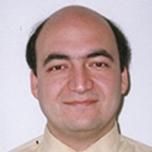Past Webinar
Mutations Impair TREM2 Maturation, Processing, and Microglial Phagocytosis
Quick Links
Introduction
In the July 2 Science Translational Medicine, an international group of scientists reported how TREM2 missense mutations linked to neurodegenerative diseases impair the protein's function. The mutations prevent TREM2 from reaching the cellular surface for proteolytic processing and shedding of its N-terminal into the extracellular space. Correspondingly, the scientists detected a reduction of soluble TREM2 in the CSF of patients with Alzheimer’s and frontotemporal dementia. The mutations weakened microglial phagocytosis.
Co-authors Christian Haass, Marco Colonna, and Gernot Kleinberger, as well asa panelists Carlos Cruchaga, Joseph El Khoury, and Jochen Walter came together a live discussion on July 8.
Listen to the full discussion here:
See slide presentations below; click on the blue circles to switch between the presentations from Christian Haass, Marco Colonna, Carlos Cruchaga, Joseph El Khoury, and Jochen Walter.
Slides
Background
Research on age-related neuroinflammation gained a tremendous boost from the 2012 discovery of mutations in the innate immune receptor TREM2 in frontotemporal dementia (FTD), and subsequently also in Alzheimer’s disease, Parkinson’s disease, and amyotrophic lateral sclerosis. Microglia, which patrol the brain’s parenchyma, highly express TREM2, as do myeloid cells. TREM2 signaling is thought to promote phagocytosis of proteinaceous and neuronal debris, while keeping microglia from adopting a cytotoxic activation state.
In the July 2 Science Translational Medicine, a large international collaboration led by Christian Haass of Ludwig-Maximilians-Universität, Munich, and Marco Colonna of Washington University, St. Louis, begin to uncover how pathogenic TREM2 variants affect its function. For example, a missense mutation causing FTD renders cell lines incapable of engulfing beads, bacteria, or Aβ1-42 in phagocytosis assays; phagocytosis is down in a TREM2 knockout mouse, as well. In AD brain, activated microglia crowd around amyloid plaques but seem to do little. “They look as if they are trying to ingest this Aβ and got stuck,” Haass said.
Normal TREM2 protein is processed at the cell membrane by the α-secretase enzymes ADAM10 and ADAM17, which shed the TREM2 extracellular domain. TREM2’s intramembrane stub becomes a substrate for regulated intramembrane proteolysis, much in the way of APP, Notch, and other type-1 membrane proteins. This processing drives TREM2’s ability to activate phagocytosis. The scientists now report that some of the known pathogenic TREM2 mutations are never shed. They generate a misfolded protein that gets stuck in the microglia’s endoplasmic reticulum. “Mutant TREM2 protein never arrives at the cell surface for shedding,” Haass said.
To translate this finding to humans, Haass and colleagues measured the shedded end of TREM2, called sTREM2, in body fluids. The scientists gathered CSF and plasma samples from one homozygous TREM2 mutation carrier and 88 controls, as well as 56 AD and 50 FTD cases. They established a sTREM2 ELISA and quantified soluble TREM2 concentrations. As the cell biology might predict, the TREM2 mutation carrier had no detectable sTREM2 in his CSF or plasma. However, the AD and FTD patients had lower CSF sTREM2 levels than controls, as well. These patients had no TREM2 mutation; therefore the data suggest their sTREM2 levels might reflect microglial dysfunction as part of the overall disease process.
- What is the function of the soluble TREM2 stub?
- Should CSF/plasma TREM2 levels be measured in longitudinal natural history studies?
- Should the complete profile of all cell types that express TREM2 be re-investigated and completed?
- How could TREM2-dependent phagocytosis be modulated for therapeutic purposes?
References
Alzpedia Citations
External Citations
Further Reading
No Available Further Reading
Primary Papers
- Kleinberger G, Yamanishi Y, Suárez-Calvet M, Czirr E, Lohmann E, Cuyvers E, Struyfs H, Pettkus N, Wenninger-Weinzierl A, Mazaheri F, Tahirovic S, Lleó A, Alcolea D, Fortea J, Willem M, Lammich S, Molinuevo JL, Sánchez-Valle R, Antonell A, Ramirez A, Heneka MT, Sleegers K, van der Zee J, Martin JJ, Engelborghs S, Demirtas-Tatlidede A, Zetterberg H, Van Broeckhoven C, Gurvit H, Wyss-Coray T, Hardy J, Colonna M, Haass C. TREM2 mutations implicated in neurodegeneration impair cell surface transport and phagocytosis. Sci Transl Med. 2014 Jul 2;6(243):243ra86. PubMed.
Panelists
-
 Christian Haass, christian.haass@mail03.med.uni-muenchen.de
Biomedizinisches Centrum (BMC), Biochemie & Deutsches Zentrum für Neurodegenerative Erkrankungen (DZNE)
Christian Haass, christian.haass@mail03.med.uni-muenchen.de
Biomedizinisches Centrum (BMC), Biochemie & Deutsches Zentrum für Neurodegenerative Erkrankungen (DZNE)
-
 Marco Colonna, Washington University
Marco Colonna, Washington University
-
 Gernot Kleinberger, Ph.D.
ISAR Bioscience
Gernot Kleinberger, Ph.D.
ISAR Bioscience
-
 Carlos Cruchaga, PhD
Washington University School of Medicine
Carlos Cruchaga, PhD
Washington University School of Medicine
-
 Joseph El Khoury, MD
Harvard Medical School
Joseph El Khoury, MD
Harvard Medical School
-
 Jochen Walter, Ph.D.
University of Bonn
Jochen Walter, Ph.D.
University of Bonn

Comments
University of Cincinnati
Based on a study (Nazmi et al., 2019), TREM2 expression depends upon type I IFN-signaling and the type I IFNs are associated with neuroinflammation. Therefore, it may be important to know whether localized type I IFN production in the AD brain has any measurable effect on the levels of sTREM2.
References:
Nazmi A, Field RH, Griffin EW, Haugh O, Hennessy E, Cox D, Reis R, Tortorelli L, Murray CL, Lopez-Rodriguez AB, Jin L, Lavelle EC, Dunne A, Cunningham C. Chronic neurodegeneration induces type I interferon synthesis via STING, shaping microglial phenotype and accelerating disease progression. Glia. 2019 Jul;67(7):1254-1276. Epub 2019 Jan 25 PubMed.
Make a Comment
To make a comment you must login or register.